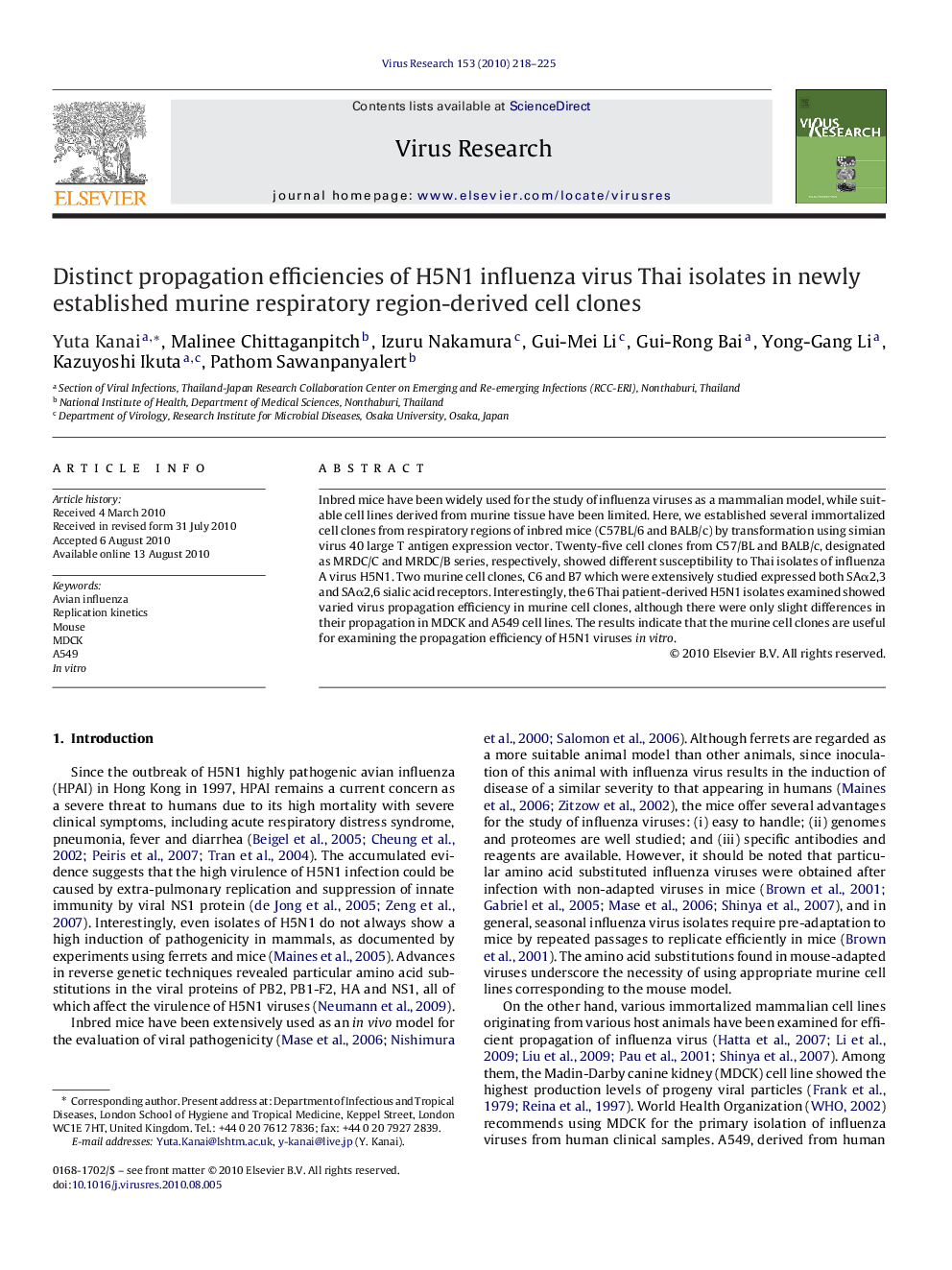| کد مقاله | کد نشریه | سال انتشار | مقاله انگلیسی | نسخه تمام متن |
|---|---|---|---|---|
| 3429249 | 1228242 | 2010 | 8 صفحه PDF | دانلود رایگان |

Inbred mice have been widely used for the study of influenza viruses as a mammalian model, while suitable cell lines derived from murine tissue have been limited. Here, we established several immortalized cell clones from respiratory regions of inbred mice (C57BL/6 and BALB/c) by transformation using simian virus 40 large T antigen expression vector. Twenty-five cell clones from C57/BL and BALB/c, designated as MRDC/C and MRDC/B series, respectively, showed different susceptibility to Thai isolates of influenza A virus H5N1. Two murine cell clones, C6 and B7 which were extensively studied expressed both SAα2,3 and SAα2,6 sialic acid receptors. Interestingly, the 6 Thai patient-derived H5N1 isolates examined showed varied virus propagation efficiency in murine cell clones, although there were only slight differences in their propagation in MDCK and A549 cell lines. The results indicate that the murine cell clones are useful for examining the propagation efficiency of H5N1 viruses in vitro.
Research highlights▶ Immortalized cell lines from inbred mice, designated MRDC (murine respiratory region-derived cell clones) were established. ▶ H5N1 influenza virus isolates showed distinct propagation efficiency in MRDCs, but not in MDCK. ▶ Transmission of particular H5N1 isolates were impaired in MRDCs.
Journal: Virus Research - Volume 153, Issue 2, November 2010, Pages 218–225